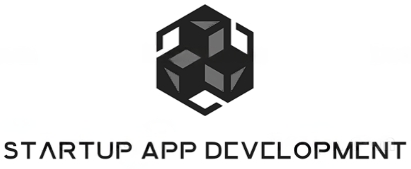Starting app development as a startup can feel overwhelming. But don’t worry, by breaking the process down into key steps, you can create a successful and impactful app. Let’s explore the essential stages of app development for startups to guide your journey.
Define Your App Idea
Begin with a clear and concise app idea. Understand the problem your app will solve and the market needs it addresses. Research your competitors to find your unique selling proposition.
The digital landscape is constantly evolving, providing endless opportunities for innovative apps. According to the Attract Group, comprehending the right path in mobile app development is crucial to setting the trajectory for your digital product. Aligning your app idea with market trends and technologies like React Native can optimize its development process and success.
Create a Comprehensive Plan
Develop a detailed plan outlining your app’s features, target audience, technology stack, and budget. This step acts as your roadmap throughout the development process.
In the world of app development for startups, planning is everything. This involves not just outlining features but deeply understanding your audience. It’s essential to create personas that detail user needs and pain points, allowing you to tailor features effectively.
Having a well-structured roadmap is vital. From defining specific milestones to scheduling periodic reviews, your plan should bridge the visionary aspects of your app with practical steps. This ensures you stay adaptable and open to iterative changes based on feedback.
Design the User Experience
Focus on UX/UI design to create a seamless and intuitive experience for users. Wireframes and prototypes can help visualize the app’s flow and functionality.
Design is a critical facet, and according to Startup App Development, integrating user feedback during the design phase can lead to exceeding user expectations. Visual appeal combined with ease of use results in higher user engagement and retention.
Develop the App
Work with developers to build the app according to your specifications. Consider starting with an MVP (Minimum Viable Product) to test core features quickly and iteratively.
Selecting the right technology stack is crucial. Leveraging frameworks like Flutter enables cross-platform development, reducing time and costs while ensuring a consistent user experience across devices. Such strategic decisions significantly enhance development efficiency.
Collaborating closely with developers who understand startup dynamics ensures more than just technical success. It captures the essence of your vision, complete with scalable and adaptable systems designed to grow alongside your aspirations.
Test Thoroughly
Conduct extensive testing to ensure your app functions correctly and is free from bugs. Gather feedback from beta users to make necessary improvements before launch.
Initial testing plays a pivotal role in the development cycle. According to our blog, testing identifies issues early, optimizing both functional and user experience aspects. This proactive approach ensures a polished product.
Launch and Market Your App
Release your app on relevant app stores and kickstart your marketing efforts. Use social media, app store optimization, and targeted ads to reach your audience and drive downloads.
A comprehensive marketing plan is vital to a successful launch. Utilize platforms like social media to build anticipation and engage with influencers to broaden your app’s reach. Effective App Store Optimization (ASO) elevates your app’s visibility among potential users.
Continuous engagement post-launch is crucial for sustained success. Analyzing user feedback can direct future updates, ensuring your app stays relevant and continues to deliver value to its users. Consider regular updates to introduce new features while maintaining a high standard of quality.
Wrapping Up the Key Steps in App Development
App development for startups involves planning, designing, building, testing, and launching. By following these key steps and focusing on user needs, you’re well on your way to launching a successful app.


